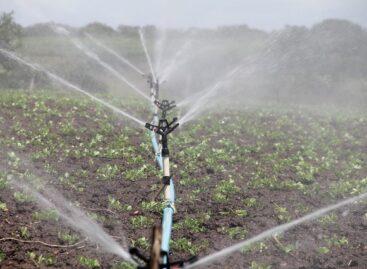OVF: the drought has eased, the need for irrigation has decreased
Due to the wetter weather of the last few days and the amount of water coming from the watersheds of the large rivers, the drought has eased, and in addition, the seasonal irrigation needs have also decreased, therefore the protection related to the water shortage no longer requires national coordination, the operation of the national technical control body of the water affairs will be closed, the water management directorates have their own powers they will continue the work – the National Water Directorate General (OVF) informed MTI on Thursday.

The thunderstorms in recent days helped a lot in alleviating the drought (Photo: Pixabay)
In the announcement, it was written that based on the data of the National Meteorological Service (OMSZ), the period between January and July was the driest seven months in Hungary since 1901, with about half of the usual precipitation missing. The national regional average value was 188 millimeters, which is 154 millimeters less than typical at this time. For this reason, the drought affected most of the country by the second half of July, and almost the entire country by the middle of August, especially the central and southern parts of the Great Plain.
Lakes and catchment areas also suffered from the drought
The large lakes suffered from the drought: the water level of Lake Velence dropped to a record low, and aeration equipment was put into operation at several points to ensure the oxygen supply to the fish. The water quality of Lake Balaton was checked on a weekly basis, but no deviations from the limit values were detected, they explained. Due to the drought, especially in the Tisza and its tributaries, the water level dropped significantly, but low water levels were also often measured in the Danube, not infrequently close to or below the lowest level ever measured, they added. The OVF wrote that in February, April, June and July, more water entered the Tisza than left the country, so the water balance of the river was positive in the first seven months of the year. Thanks to this, even despite the low water level of the Tisza, Szolnok’s drinking water supply and agricultural water needs were continuously solved. The main pillar of the defense against drought was the introduction of the irrigation schedule, i.e. the farmers could take irrigation water in critical places only at certain times of the day, according to a scheduled schedule. Thanks to this and the previously stored amount of water, the water needs of farmers with a valid water service contract could be fully met, and there was no need for water restrictions anywhere – read the announcement.
At the same time, it was noted that the extremely low water level in the Tisza enabled the relevant water directorates to carry out measurements on the Tisza and its tributaries, the results of which can be used to make navigation safer, and hydrological forecasting and the determination of available water resources can also become more accurate.
The lack of water in recent weeks and the scale of the interventions clearly show that meeting irrigation water needs and maintaining the sewer network involves a significant financial outlay – they continued. Therefore, the irrigation developments started in recent years must be continued, and in the agricultural sector, the development of water systems managed by users, connecting the state water supply and agricultural lands, must be further encouraged. This is how it can be achieved that agricultural production is more resistant to drought phenomena – they drew attention to it.
MTI
Related news
Ministry of Agriculture: the government is giving priority support to the development of irrigation
🎧 Hallgasd a cikket: Lejátszás Szünet Folytatás Leállítás Nyelv: Auto…
Read more >Despite the drought, there will be no shortage of high-quality Hungarian fish
🎧 Hallgasd a cikket: Lejátszás Szünet Folytatás Leállítás Nyelv: Auto…
Read more >Farmers can count on the government in the fight against drought
🎧 Hallgasd a cikket: Lejátszás Szünet Folytatás Leállítás Nyelv: Auto…
Read more >Related news
Even though the price of cocoa has halved, chocolate will not become cheaper
🎧 Hallgasd a cikket: Lejátszás Szünet Folytatás Leállítás Nyelv: Auto…
Read more >Temu is crushing domestic webshops – Christmas won’t change either
🎧 Hallgasd a cikket: Lejátszás Szünet Folytatás Leállítás Nyelv: Auto…
Read more >The Hungarian Food Bank is putting together 44,000 food packages from the proceeds of ALDI’s first Advent market
🎧 Hallgasd a cikket: Lejátszás Szünet Folytatás Leállítás Nyelv: Auto…
Read more >






